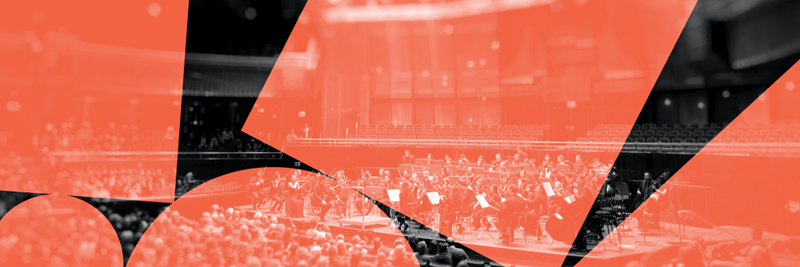An Orchestra Conductor's Insights into Digital Strategy

Have you ever met a user experience researcher or digital strategist who once wielded a conductor's baton? I only know one.
And it’s me.
The connection between these seemingly disparate roles is truly surprising. So today, I’ll explain how a digital strategist and an orchestra conductor have much more in common than meets the eye.
Simplifying Complexity
I’ll begin with the conductor's first task: simplifying the intricacies of the music they bring to life. I recall spending countless hours studying masterpieces like Beethoven's and Mahler's symphonies. My goal was clear: simplify. I had to grasp how every detail fit together to create a meaningful whole.
But it was no easy feat. Just glancing at the sheet music, such as the following half-page excerpt out of 248 total pages, can overwhelm even the most trained eyes. Conductors invest significant time and resources in learning to navigate this visual complexity.
If you're unfamiliar with classical notation, these markings represent not only notes and rhythms but also stylistic nuances like volume and articulation, as well as an array of German terms describing the artist's intricate vision.
To begin, I analyzed music on a harmonic level. Essentially, I sought to understand the main keys that shaped the piece. For non-musicians: a key is a system of notes that harmonize together. Every piece of music has a key serving as its foundation.
As a starting point, I sketched the harmonic patterns, capturing the essence of the music. For instance, identifying C minor as the primary key, followed by a more intricate progression of C minor, G Major, C minor, and so on.
I find myself employing a similar approach today. As a digital strategist at Velir, I create simple frameworks to analyze digital experiences for our clients. Sketching out sitemaps or other concepts allows me to visualize their parts and their cohesive relationship within the larger context of what clients are trying to accomplish.
Empathy in Action
Once I had a basic understanding of the music, my next step was bringing it to life through people — both those listening and those performing. This involved using the power of empathy.
With a deep understanding of the music, I immersed myself in the shoes of the orchestra members and the audience. I mentally synchronized with the players as they drew their bows across the strings or readied their instruments. As I connected with their actions on a physical and emotional level, my gestures mirrored theirs.
For instance, if I wanted the orchestra to play a short note, my quick and abrupt motion magically translated into the desired sound. This synergy between the conductor and the orchestra, built on empathy, creates an astonishing outcome.
To establish this connection, I needed an intimate understanding of each player's needs and preferences. Certain gestures could be counterproductive, like taking a deep breath before cueing an oboist, who typically requires a smaller breath. An unhelpful conductor can become mere background noise, much like a cluttered and confusing interface on a website. My gestures weren’t the only skills I relied on. I also had to actively listen and observe to ensure the orchestra responded as expected. When I work with clients as a digital strategist, I actively listen to them as they describe their goals so I can help design a user interface that meets them.
The Digital Strategy Link
So, what does all this have to do with digital strategy? Quite simply, everything.
My process of empathizing with musicians and envisioning their every step parallels creating an audience journey map. Just as conducting a piece of music includes mapping out meaningful steps for the players, designing a new user experience involves mapping out a customer's journey toward a specific goal you want them to accomplish.
As with conducting, my real test lies in the live performance. Only by standing before a live orchestra could I witness firsthand which gestures or ideas resonated and which fell flat. Similarly, in digital strategy, I must test my ideas with real people, observing their reactions and adapting accordingly.
Two fundamental skills — simplicity and empathy — guided my transition from waving a baton to shaping digital strategies. They serve as a constant reminder that the most critical attributes for success in any job aren’t the learned technical skills but rather the underlying strategies for connecting with people.
Need help connecting with your audiences so you can better understand them, and simplifying your interactions with them to maximize success? Reach out.






